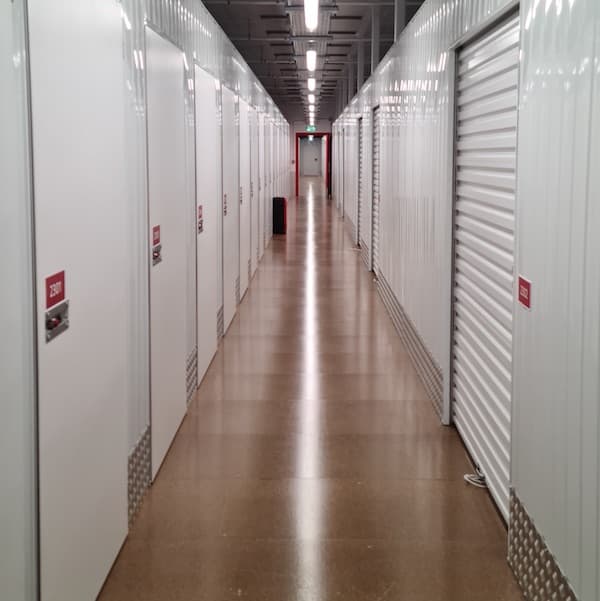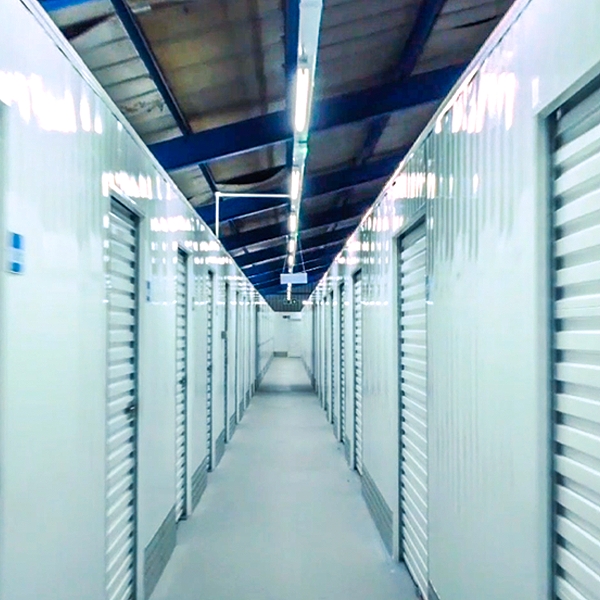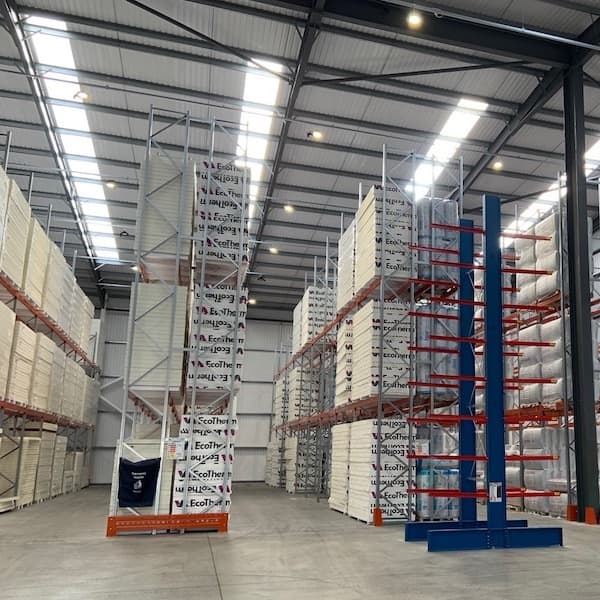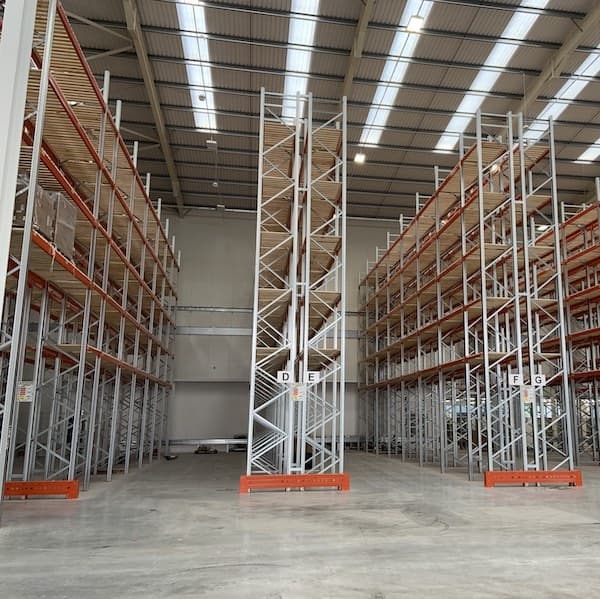- Mezzanine Floors
- Solutions
- Multi-Tier Mezzanines
- Mezzanine Pallet Safety Gates
- Mezzanine Staircases
- Mezzanine Handrails and Balustrades
- Mezzanine Decking
- Fire Protection for Mezzanine Floors
- Mezzanine Lift Shaft Design and Installation
- Resources
- Mezzanine Floor Calculator
- Mezzanine Floor Regulations and Building Control
- Self-Storage Mezzanine Floors
- Self-Storage Units
- Resources
- Self-Storage Site Selection Information
- Calculating The ROI of Self-Storage Conversions
- Planning for Automation in Self Storage
- Racking & Shelving
- Services
- Racking Design
- Racking Manufacture
- Racking Installation
- Racking Inspections
- Retail Racking And Shelving Systems
- Solutions
- Cantilever Racking
- Pallet Racking
- Coil Racking
- Longspan Shelving
- Tyre Racking
- Kimer Racking
- Live Storage Racking
- Drive In & Drive Through Racking
- Clip Shelving
- Mobile Shelving
- Custom Fabrications
- About Us
- USS Case Studies
- Self-Storage Fit-out For Raked Ceiling Building
- Mezzanine And Staircases For Entertainment Venue
- New Mezzanine And Staircases For Major Retailer
- Mezzanine Pallet Safety Gate
- Self-Storage Fit-Out Project For Brand New Facility
- Warehouse Racking, Wire Mesh & Shelving for New Warehouse
- Self-Storage Partition System & Components Installation
- Self-Storage Store Mezzanine And Staircases
- Multi-Tier Mezzanine For Logistics & Distribution Facility
- Warehouse Plant Platform
- Self-Storage Facility Space Expansion
- Mezzanine Floor For Distribution Warehouse
- Bespoke Feature Staircase & Mezzanine
- Single Level, Multi-Use Mezzanine
- Mezzanine For A New Building
- Mezzanine Floor For Plumbing Supplies Warehouse
- New Racking System and Mezzanine Floor
- Car Park Conversion To Self Storage Facility
- Pallet Racking and Cantilever Racking For Warehouse
- Two Mezzanine Floors For Self-Storage Facility In Birmingham
- Our Accreditations
- Contact Us
- USS Case Studies
- immediate reporting of damage and defects;
- visual inspections at regular intervals; and
- ‘expert’ inspections carried out at intervals by a competent person.
The Latest Blogs From USS
Pallet Racking Inspections And Checks. Best Practice Tips And Advice
read
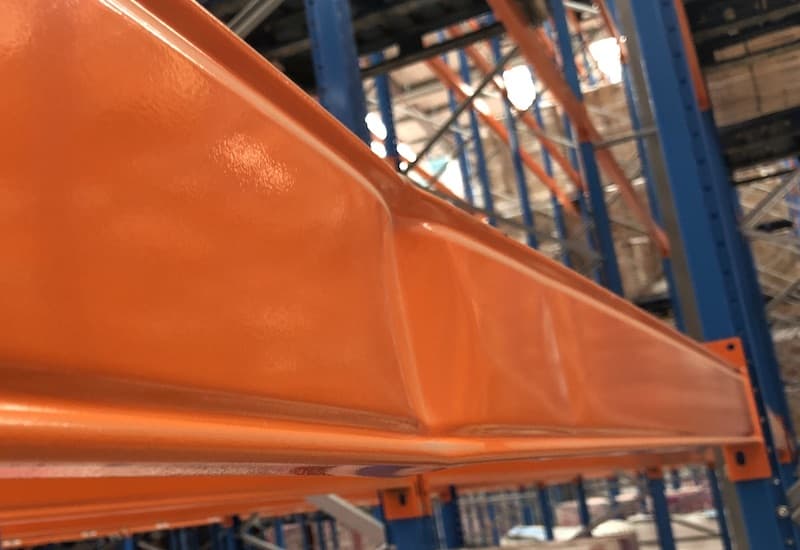
The storage option of choice and one of the many pieces of hard-working warehouse equipment in use 24/7 365 days a year, pallet racking needs to stay in top condition to serve its function well.
Why Inspect Pallet Racking?
It may seem obvious, but the most common damages sustained by warehouse racking systems are usually the result of daily work activities – impact incidents from mechanical handling equipment like forklifts, overloading/uneven loading, and of course, wear and tear on components. Given this, it's common sense to ensure all pallet racking undergoes regular checks to ensure compliance with safety regulations and maintain a safe working environment. Not only that, putting an inspection process in place focuses a spotlight on poor working practices that could damage your operation - and in the worst case, your reputation.
First of all, let's face it - pallets only fall one way, and that's down. All the bumps, bashes and collisions that take place in a busy work environment contribute to a steady erosion of the integrity of any piece of equipment. In the case of pallet racking, lack of care can lead to serious consequences. Racks can and do collapse, causing deaths and injuries and untold misery. Businesses can suffer serious losses in the shape of lost inventory.
The smallest piece of damage could evolve into a more expensive problem. A damaged upright can be repaired or replaced at minimal cost compared to a racking collapse incident. Take a forklift, for example. The impact from one of these can seriously compromise the integrity of a supporting upright even though the damage may look superficial. Racking systems are designed to both carry a serious amount of weight - and to store huge volumes of materials way up into the high, otherwise empty spaces of warehouses. These systems rely on the strength of supporting components, from rack frames, load beams and horizontal braces to nuts and bolts, clips and locking pins.
Many insurance companies will require a racking inspection. To not do this would, therefore, invalidate insurance.
What is Best Practice For Racking Inspections?
Racking falls under the definition of "work equipment" and is therefore subject to the UK's Provision and Use of Work Equipment Regulations 1998 which requires employers to routinely inspect any work equipment that has the potential to deteriorate or be damaged. Even the best Pallet racking can have this potential so it too falls into this category.
Furthermore, the Health and Safety Executive states a business should:
Inspect racking regularly to make sure it is repaired and maintained properly and is safe. You should use three types of inspection:
We recommend appointing and training an internal person or team from your company to inspect racking and carry out spot checks between scheduled professional inspections (we'll talk about these in another post).
Put a process in place for documenting inspections and ensure these records are retained. Include relevant information such as when the inspection took place, what was found, any actions required and who was assigned to carry them out. Using a documented process allows you to track both the regularity of the inspection process and how rigorous it is. The guidance is to carry out regular inspections; if your warehouse is a busy environment, it would make sense to have a daily, or at the very least, weekly inspection frequency.
SEMA Recommendations
SEMA has very distinct recommendations about limits for racking and the diagram below shows these limits.
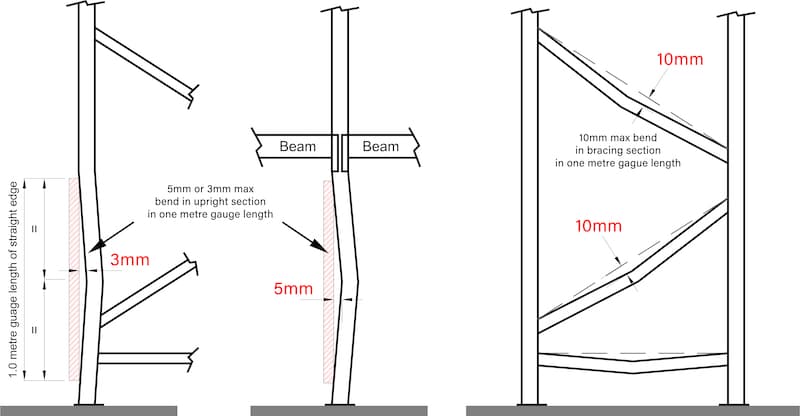
While the diagram above is useful, out of context it is not as helpful as you would think. These limits are the 'maximum' limits recommended by SEMA and we stress to our readers that they shouldn't take a drawing like this as a given for their own racking and situation. As experts, we see many circumstances where we would recommend a replacement even within these limits due to the type of damage that's been sustained (for example, dents, buckles, tears, splits). At any time you are unsure about the safety of pallet racking because of damage, it's important you seek a professional opinion/inspection.
What Should You Check?
A lot of the checks you can undertake in-house can be based on looking for the visible signs of anything amiss or out of kilter. So, in the first instance, eyes are your best tool.
We asked our technical drawing team to come up with a diagram to show examples of the common types of damage that we see a lot of.
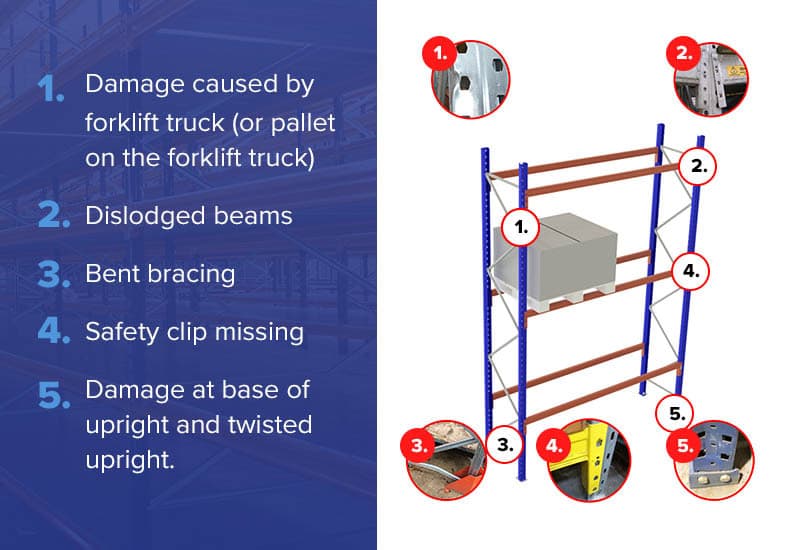
Everything In - or Out of - Alignment?
Racking systems that have undergone any kind of reconfiguration over time, have been incorrectly installed or sit on shaky or uneven foundations are all candidates for getting out of plumb and unlevel. Anything that looks out of alignment or is leaning where it shouldn't be leaning is a problem.
Signs of Corrosion? Flaky Paintwork?
Rust or corrosion is a definite indication of weakness in the metal - but even a simple paint scrape on metalwork could evidence signs of a collision and a possible area of weakness in the metal beneath.
Overloaded?
First of all, it's not always obvious just by looking, whether racking is overloaded. But since overloading is one of the primary reasons racking can fail, it's one of the most important checks that you can carry out. Weight-compliant racking that's fit for purpose only stays that way when it's inspected regularly. Modern racking should always have a weight capacity notice, stamp, sign or sticker on it. Make sure this isn't obscured. These notices are there to help check against the weight of materials being stored.
Overloading a rack can often take place imperceptibly over time so remain vigilant. If the racking is older, it could be of non-standard construction. It may not even have a weight capacity notice. This is a clear sign of potential danger and steps should be taken to either remove and replace the racking or to establish what capacity it can safely hold. Your racking supplier might be able to provide their technical documentation with this information.
All Bent Out of Shape?
Twists, dings and bends in any part of the racking framework, beams and bases are a clear sign of potential failure. Check the size of gaps in anything that looks bent or twisted by placing a straight edge parallel to the damaged section's length. This is an easy way to reveal the size of the gap. Using this information, an expert can advise on your next steps.
Our tips are provided for information purposes only; at USS we recommend all pallet racking is subject to regular professional inspection and for more peace of mind, having a maintenance agreement in place for those unforeseen incidents that can cause damage.
Would Your Business Benefit From a Racking Inspection?
If you would like advice about your current pallet racking or have concerns and would like to discuss a replacement system, USS is currently carrying out racking inspections and can offer this service to you now. Simply fill in our contact form and ask us about racking inspections.
This blog is for information purposes only and should not be construed as legal or financial advice and not intended to be substituted as legal or financial advice.
Find Us
S & L United Storage Systems Ltd
United House, The Street
Takeley, Bishop's Stortford
Hertfordshire, CM22 6QR
Company No. 1313816
VAT No. 291616253Say Hello
01279 871 787Copyright © 2025 S & L United Storage Systems Ltd. All rights reserved.
- About Us


